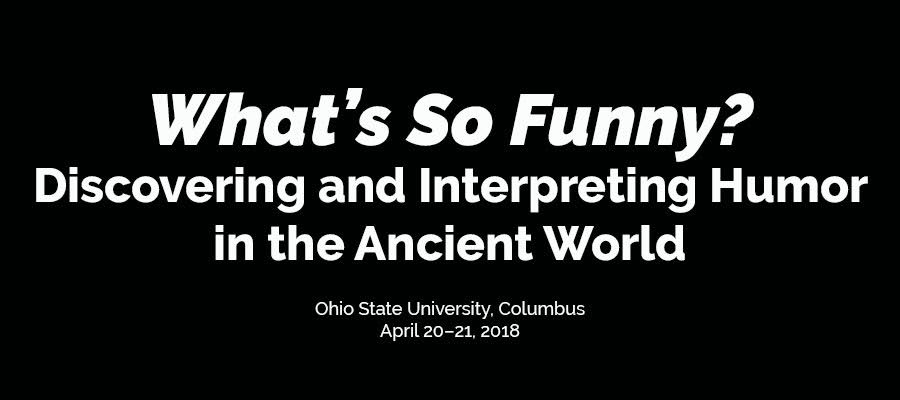What’s So Funny? Discovering and Interpreting Humor in the Ancient World, Ohio State University, Columbus, April 20–21, 2018
Humor is a ubiquitous human phenomenon with a wide range of applications. Yet, what is deemed humorous is often culturally determined. This poses a significant challenge for scholars of ancient cultures. How do we identify what an ancient culture found funny? How did they use humor, and what drove their usage?
The purpose of this conference is to provide a forum for scholars across disciplines to discuss and debate humor and its functions in both textual and material sources across the ancient Mediterranean, from the early Near East through late antiquity. We invite papers that address the above questions, or any others, on the topic of humor in an ancient Mediterranean context.
Possible topics include:
- Theoretical models for identifying and understanding humor and comedy in ancient cultures
- Ancient definitions and theories of humor
- Humor in political discourse, including propaganda, competition, and resistance
- The role of humor in religion and ritual
- Humor and social taboo: obscenities, scatology, and transgressive behaviors
- Women, sexuality, and gender as sites of humor
- Humor and social boundaries: elite and popular, native and foreign, center and periphery, divine and mortal, and other lines of membership
- Humor’s function in narrative and in the relationship between storyteller and audience
- Humor as entertainment in daily life, including inscriptions, performance, and celebration
Keynote Speakers:
- Jack M. Sasson (Emeritus Professor, Vanderbilt University)
- Ian Ruffell (Classics, University of Glasgow)
- Amy Richlin (Classics, University of California at Los Angeles)
- Christine Hayes (Religious Studies, Yale University)
